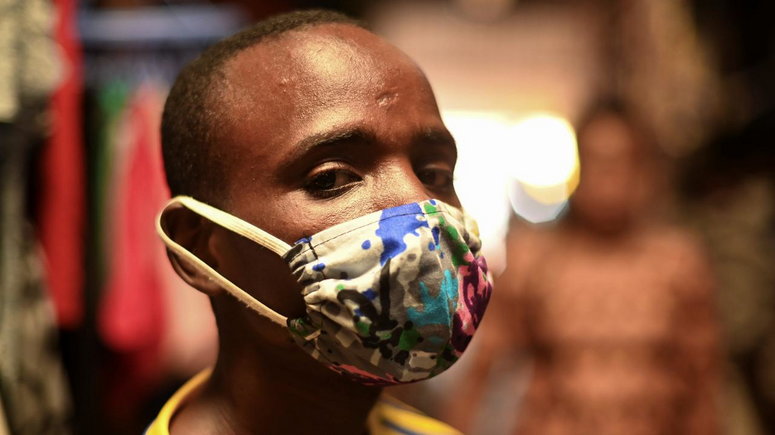The Kenyan government has begun distributing genetically modified (GM) and hybrid seeds in a bid to increase cotton production to meet the country’s soaring demand for face masks in response to COVID-19.
Farmers are receiving 1 metric ton of GM cotton seed, which they will plant on 720 demonstration lots covering 10,000 hectares to showcase the insect-resistant Bt technology. The government is also distributing 16 metric tons of hybrid cotton seeds to assist farmers during the April/May planting season.
This support is expected to help provide the textile industry with raw materials now in short supply. The Bt and certified hybrid seeds can produce over 2,000 kilograms of cotton per hectare, compared to the current average yield of 572 kg per hectare.
“There is soaring demand for cotton as universities and county governments lead new factories investing in the manufacturing of COVID-19 basic protective equipment, such as surgical masks,” said Anthony Muriithi, director-general of the Agriculture and Food Authority.
As an indication of the demand for more cotton, some factories, such as Kitui County Textile Center, have been transformed instantly into making 30,000 surgical masks a day, whereas they previously produced almost none.
The domestic production of COVID-19 personal protective equipment (PPE) should be encouraged and supported, said Kitui County Gov. Charity Ngilu. The county government is considering building two more factories from funds earned from selling the masks, as well as training other counties on how to make their equipment rather than relying on imports, Ngilu added.
“Increased cotton production means ginners and farmers will flatten the demand curve in the next five months when the crop is harvested,” Muriithi told the Alliance for Science. “Kenya imports 80 percent of the cotton it processes from neighboring countries, such as Uganda. Cotton is one of the crops with a very elaborate value chain, benefiting many players such as farmers, ginneries and the consumer.
“Although demand for fabrics is high, peripheral industries like [food grade] oil also will be boosted,” he added. “Currently, we are importing a lot of vegetable oil. With increased cotton production, cotton oil, which is cholesterol-free, would enhance consumer’s preference. We are also seeing an opportunity in an increased dairy meal” — livestock feed made from cotton seed.
In addition, there is strong demand for sanitary pads, diapers and blankets, which are primarily made of cotton, Muriithi said.

The government has spent some US$640,000 to procure the seed and plans to obtain even more for the October/November short rain planting season, according to Ann Nyaga, chief administrative secretary of the Ministry of Agriculture, Livestock, Fisheries and Cooperatives. Farmers are receiving Bt cotton seeds for free this year as the government is bearing 100 percent of the seed cost.
The investments are expected to help boost cotton production from a current low of 29,000 bales annually to about 200,000 bales per year in its short-term strategy.
“There are currently about 30,000 cotton farmers, while the industry can support over 200,000 farmers,” Nyaga said. “The trade has the potential to employ 1.5 million people under the cotton textile and clothing value chain. Income earnings to growers will contribute to poverty reduction, especially in arid and semi-arid lands.”
The push is part of President Kenyatta’s “Big-4” agenda, with the government committed to supporting farmers with inputs, access and development of improved seeds, price supports, construction of seed cotton buying centers, the establishment of modern ginneries and commercialization of Bt cotton.
The first GM seeds and their hybrid counterparts will be distributed to the counties of Busia, Bungoma, Siaya, Kisumu, Homabay, Baringo, Marakwet, Kilifi, Kwale, Tana River and Lamu, according to the Ministry of Agriculture, Livestock, Fisheries and Cooperatives. Farmer recruitment is still ongoing, with the “full commercialization of Bt cotton’” expected during the next planting season.
“I have already prepared my land to plant Bt cotton,” said James Onyango, a farmer in Siaya County. “In the next three and half months, I will be harvesting it. From what we have seen, demand for cotton is increasing.”
With higher production, Kenya will be able to cut cotton imports from neighboring countries and improve its self-sufficiency, Onyango said.
Kenya textile exports enjoy quota and duty-free access to markets in the United States under the African Growth and Opportunity Act (AGO), according to the Ministry of Agriculture. With the increased adoption of technologies like GM cotton, income earnings from the sector are likely to improve.
